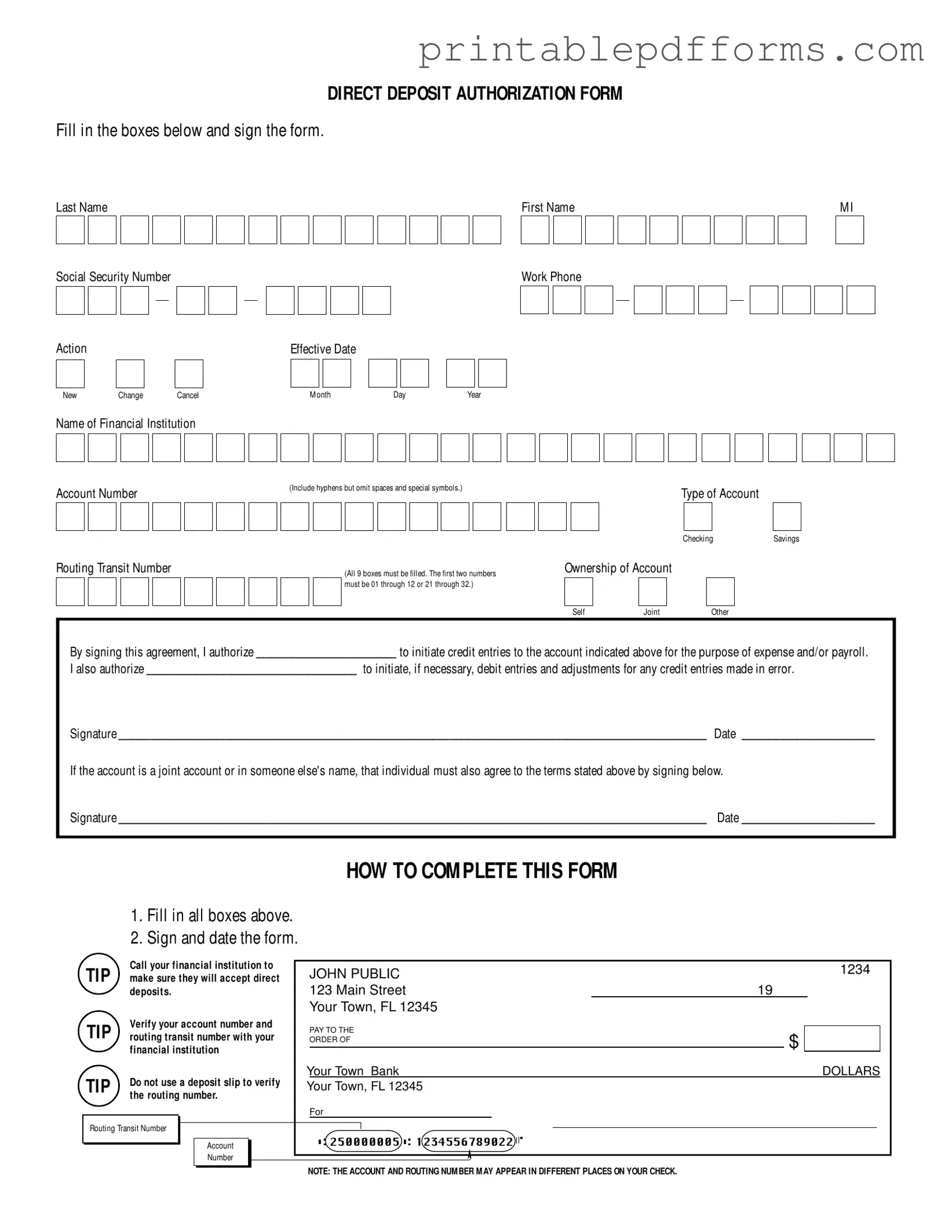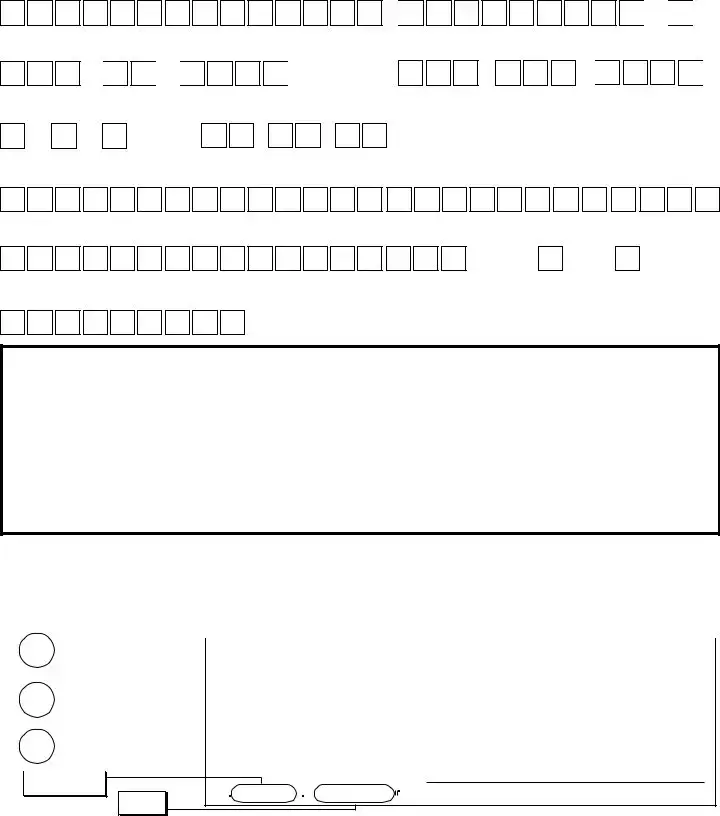The Generic Direct Deposit form serves as a crucial tool for individuals looking to streamline their payment processes, whether for payroll or other financial transactions. This form requires basic personal information, including your name, Social Security number, and contact details. It also necessitates information about your financial institution, such as the name of the bank, your account number, and the routing transit number, which is essential for directing funds accurately. The form allows you to specify whether you are opening a new account, making a change, or canceling a previous authorization. Additionally, it includes a section for indicating the type of account, whether it be savings or checking. By signing the form, you grant permission for your employer or payment provider to deposit funds directly into your account, ensuring timely access to your earnings. If the account is jointly held or in another person's name, that individual must also provide their signature to authorize the arrangement. Completing the form accurately is important, as it ensures that your financial transactions proceed without delay. Tips for filling out the form include verifying your account and routing numbers with your bank, as well as avoiding the use of deposit slips for confirmation. Overall, the Generic Direct Deposit form is designed to simplify the payment process while providing the necessary safeguards for both the payer and the payee.



 □
□






